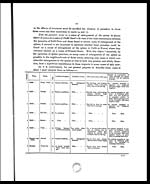Medicine - Institutions > Army health reports and medical documents > Scientific memoirs by officers of the Medical and Sanitary Departments of the Government of India > Number 13 - Oriental or Dehli sore > Oriental or Dehli sore
(16) Page 10
Download files
Individual page:
Thumbnail gallery: Grid view | List view

10
small, deeply staining bodies, which in thick sections look like large cocci, in
thinner sections like large cocci surrounded by a clear space, and in the thinnest
sections present the characteristic structure of the parasitic bodies already de-
scribed as present in films made from the fresh tissues. Owing to the contraction
undergone by the tissues during fixation the bodies appear more rounded and
smaller than when seen in films, but when very thin parts of the section are
examined the two characteristic nuclei of each body are easily seen, and there
can be no doubt that the bodies are identical with those seen in films. On the
other hand it is easy to understand how Cunningham and Reihl, who had no
opportunity of examining films, were unable to make out any definite structure in
the bodies seen only in sections.
The parasitic bodies are not contained in all the large cells composing the
deposit of fresh granulation tissue. Comparatively large areas of tissue may be
examined in the cells of which no bodies are present, but in these areas the cells
themselves are of the same character as those containing the bodies.
In parts of the section the invasion of hair follicles and sweat glands by the
new tissue can be observed, and in figure 5 is shown a portion of a section in which
nothing remains but a dead hair encased in the characteristic cells containing
parasites.
In addition to the large parasite-containing cells there are seen in sections a
number of cells resembling lymphocytes and rarely one or two polynuclear cells.
In the almost complete absence of polynuclear cells, however, both films and
sections from a true case of Delhi Sore differ markedly from specimens obtained
from other sores.
Summary of results as regards the presence of parasites in Delhi Sores.—
The parasites just described were found in the sores of 11 out of the 18 cases of
which brief notes have been given above. If the sores themselves are counted,
they were found in 13 out of 20 sores. They were not found in the sores of
cases 2, 3, 6, 8, 13, 16, and 18. In cases 2, 6, and 8 the correctness of the diagnosis
was doubtful. Case 3, which was undoubtedly a true case of Delhi Sore, had
lasted eighteen months, and on turning to the description of Case 1, which at the
time of the second examination had also lasted about the same period, it will
be seen that parasites were absent at the time of the second examination, though
they were present in abundance six months before. It is quite possible, therefore,
that in a certain proportion of sores which are undoubtedly true Oriental Sores,
parasites may not be found if the sore has lasted a long time and has commenced
to heal. As regards the Frontier Sores it will be noted that cases 13, 16, and 18 in
which the parasites were not found had been under treatment in hospital consider-
ably longer than the other cases. It would indeed be surprising if the parasites
did not disappear after continuous treatment for 70 days, and I do not doubt that
Set display mode to: Large image | Zoom image | Transcription
Images and transcriptions on this page, including medium image downloads, may be used under the Creative Commons Attribution 4.0 International Licence unless otherwise stated. ![]()
| Permanent URL | https://digital.nls.uk/75026972 |
|---|
| Shelfmark | IP/QB.10 |
|---|---|
| Additional NLS resources: | |




